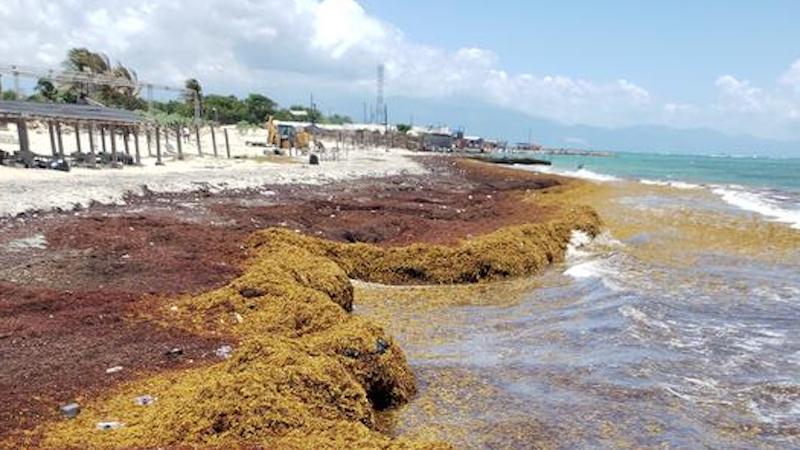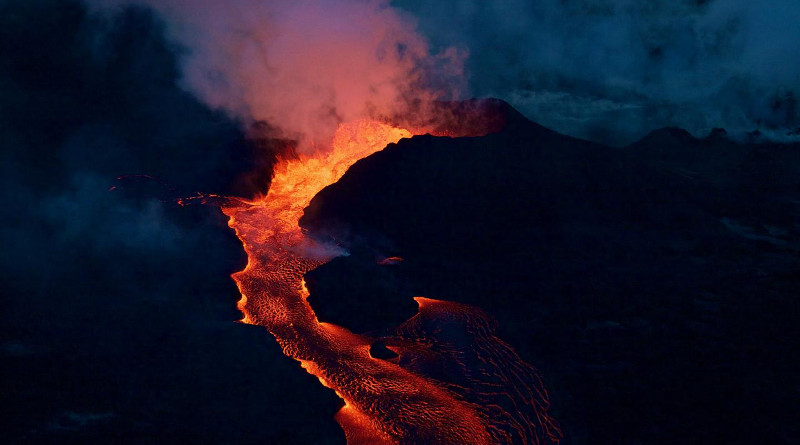The post It’s not just guilty or not guilty. Here are all the possible outcomes of the Trump trial. – POLITICO first appeared on The Trump Investigations – trumpinvestigations.net – The News And Times.
Day: May 27, 2024

While recent reports have stated that more than half the world’s largest lakes, including lakes in the Tibetan plateau, are drying up, a paper in Nature Geoscience suggests that, by the end of this century, land-locked lakes on the Tibetan Plateau are set to increase exponentially, resulting in major land loss and related economic, environmental and climatic impacts.
Climate and weather predictions suggest that increased rainfall due to climate change will enlarge these lakes, and see water levels rise by up to 10 metres.
The volume of water caught in these land-locked lakes is estimated to increase fourfold by 2100 according to the research by Dr Iestyn Woolway of Bangor University (UK) and colleagues in China, Saudi Arabia, USA and France.
The increased lake surface area will also mean the loss of critical land area, for agriculture, human habitation, critical road and rail networks and economic disruption.
Dr Woolway commented,
“Climate change is making the Tibetan Plateau greener and more habitable, attracting more people to higher altitudes due to better access to water. However, rising lake levels require urgent planning and policies to mitigate impacts on the region’s ecology and population.”
The resultant land loss could also lead to a change in the landscape, as lakes merge and the course of the rivers which feed and inter-connect the lakes are altered.
This could lead to increased greenhouse gas emissions and a positive feedback loop, amplifying climate change. An increase in freshwater, and in flow between lakes could also cause a change in ecology and affect wildlife. As an example, when the Zonang Lake in Hoh Xil Nature Reserve burst its banks in 2011, the Tibetan Antelope found their migration route blocked.
The post Warmer Wetter Climate Predicted To Bring Societal And Ecological Impact To Tibetan Plateau first appeared on The South Caucasus News.
Feeding children peanuts regularly from infancy to age five reduced the rate of peanut allergy in adolescence by 71%, even after many years when the children ate or avoided peanut as desired.
The new findings provide conclusive evidence that introducing peanuts into babies’ diets early will achieve long-term prevention of peanut allergy.
Lead investigator Professor Gideon Lack from King’s College London said: “Decades of advice to avoid peanuts has made parents fearful of introducing peanuts at an early age. The evidence is clear that early introduction of peanut in infancy induces long term tolerance and protects children from allergy well into adolescence. This simple intervention will make a remarkable difference to future generations and see peanut allergies plummet.”
Results from the LEAP-Trio trial are published today in the NEJM Evidence by researchers from King’s College London and sponsored and co-funded by the US National Institutes of Health’s National Institute of Allergy and Infectious Diseases (NIAID).
Peanut allergy is rising in Western countries. The prevalence of peanut allergy is about 2% in young children in North America, UK, Western Europe, and Australia. For some, even small amounts of peanuts can lead to a life-threatening allergic reaction. This, as well as conflicting advice, has made parents and caregivers fearful of introducing peanuts into diets.
The new research findings come from the LEAP-Trio study, building on the results of the Learning Early About Peanut Allergy (LEAP) clinical trial. In the first trial, half of the participants were asked to regularly consume peanut from infancy until age 5 years, while the other half were asked to avoid peanuts during that period. Researchers found that early introduction of peanut reduced the risk of peanut allergy at age 5 by 81%.
The investigators followed up both groups from age 6 to age 12 or older. In that period, children could choose to eat peanut in whatever amount and frequency they wanted. They found that 15.4% of participants from the early childhood peanut-avoidance group and 4.4% from the early childhood peanut-consumption group had peanut allergy at age 12 or older. These results show that regular, early peanut consumption reduce the risk of peanut allergy in adolescence by 71% compared to early peanut avoidance.
Professor George Du Toit, Co-Lead Investigator from King’s College London said: “This is a safe and highly effective intervention which can be implemented as early as 4 months of age. The infant needs to be developmentally ready to start weaning and peanut should be introduced as a soft pureed paste or as peanut puffs.”
The researchers also found that although participants in the LEAP peanut-consumption group ate more peanut throughout childhood than the other participants overall, the frequency and amount of peanut consumed varied widely in both groups and included periods of not eating peanut. This shows that the protective effect of early peanut consumption lasts without the need to consistently eat peanut products throughout childhood and early adolescence.
The LEAP-Trio study team tested the adolescents for peanut allergy primarily through an oral food challenge. This involved giving participants gradually increasing amounts of peanut in a carefully controlled setting to determine if they could safely consume at least 5 grams of peanut, the equivalent of more than 20 peanuts. The study team also surveyed participants about their recent patterns of peanut consumption and verified the self-reports through measurements of peanut in dust from participants’ beds, a technique previously validated by LEAP investigators.
Professor Lack, who is the Head of the Children’s Allergy Service at Guy’s and St Thomas’ NHS Foundation Trust, added: “Early consumption of peanut will prevent more than 100,000 new cases of peanut allergy every year worldwide.”
The post Feeding Infants Peanut Products Protects Against Allergy Into Adolescence first appeared on The South Caucasus News.

Researchers have been working to track and study floating sargassum, a prolific seaweed swamping Caribbean and West African shorelines, and causing environmental and economic harm.
The stranded seaweed blocks fishing boats; threatens tourism; disrupts turtle nesting sites, reefs and mangroves, and releases toxic gas, which impacts human health and damages electrical equipment.
First reported by Christopher Columbus in the 15th century, floating mats of sargassum have long been present in the North Atlantic. However, since 2011, a floating population has established between West Africa and South America, and increased in size to form “the great Atlantic sargassum belt” – a 9,000km-long macroalgal bloom, visible from space and estimated to weigh 35 million tons.
The massive blooms of sargassum are thought to be down to nutrient pollution and warming seas, and vast quantities of the seaweed end up in landfill each year.
The research team, from the Universities of York and Southampton, alongside colleagues from the University of the West Indies in Jamaica and Barbados, set out to learn more about sargassum’s biomass composition in order to unlock its potential to be used to produce sustainable products.
While the seaweed is an abundant biomass, its possible uses are limited due to its high arsenic content.
First author of the study Dr Carla Machado, a research associate in the Department of Biology, said: “The small quantities of sargassum that used to wash ashore in the Caribbean provided a habitat for turtles, crabs and fish and contributed to beach formation as it decomposed, but the vast sargassum blooms of the past decade are a global problem that will continue to grow and have a major impact in the affected countries.
This research project has brought together international researchers specialising in biomass composition and satellite imaging to track, sample and study sargassum, providing crucial new knowledge of this little-understood macroalgae.”
For a biomass to be utilised, it needs to be consistent in its composition; this ensures it can be processed efficiently and behave predictably during production.
The results of the study showed that, overall, the biochemical composition of sargassum is consistent throughout the year. The researchers tested different processing methods for the seaweed, including shade-drying or freezing, and found the protein content of the seaweed stayed the same. However, the method of processing did affect levels of other components such as alginate, which can be processed for many applications, including biomaterials.
The researchers collected samples of sargassum in Jamaica throughout 2021, which coincided with the April 2021 eruption of La Soufrière on the Caribbean island of Saint Vincent.
Using drift patterns, the authors calculated that the sargassum samples they collected in August 2021 would have spent approximately 50 days exposed to ash from the eruption.
They found that seaweed that had likely been in contact with volcanic ash contained less arsenic, but had accumulated other elements including nickel and zinc.
Lead author of the study, Dr Thierry Tonon from the Department of Biology at the University of York said: “Understanding sargassum’s response to environmental conditions is crucial for unlocking its biology and potential value.
“With the great sargassum belt also receiving additional nutrients from Sahara dust that blows across the Atlantic, huge quantities of the seaweed washing up on coastlines looks set to become the new normal.”
There is much more work to be done to increase understanding about sargassum and how it is going to behave in years to come, the researchers say. This will provide a body of evidence that could inform an international response to the problems it poses to people and the environment and transform it into something useful.
Professor Robert Marsh from the University of Southampton said: “The sargassum beaching around Jamaica in late summer 2021 carried distinct traces of the volcanic ash that settled upon it around 4 months earlier, just to the east of St Vincent; this novel ‘volcanic tag’ confirmed that sargassum arrives each summer at Jamaican beaches after a months-long journey drifting with currents from the central tropical Atlantic.”
Professor Hazel A. Oxenford from the University of the West Indies said: “Volcanic ash collected in my garden from the St Vincent eruption was used to determine its chemical signature. Being able to detect those components in sargassum after it travelled more than 1,700 km across the Caribbean to Jamaica was exciting. It confirmed our predicted transport pathway for sargassum, showed that the seaweed lives for at least 4 months and demonstrates the marine connectivity across the region.”
Professor Mona Webber from the University of the West Indies added: “It is very important for Caribbean Islands being affected by the sargassum inundation to be able to benefit from its valorization. Understanding how the sargassum we collect in Jamaica has changed en route to our shores and factors that could affect especially the arsenic content, will propel us towards safe use of the algal biomass.”
The post Secrets Of Sargassum: Scientists Advance Knowledge Of Seaweed Causing Chaos In Caribbean And West Africa first appeared on The South Caucasus News.

No two volcanic eruptions are exactly alike, but scientists think a series of explosive eruptions at Kīlauea volcano fit into a whole new category.
By analyzing the dynamics of 12 back-to-back explosions that happened in 2018, researchers describe a new type of volcanic eruption mechanism. The explosions were driven by sudden pressure increases as the ground collapsed, which blasted plumes of rock fragments and hot gas into the air, much like a classic stomp-rocket toy.
Researchers from the University of Oregon, United States Geological Survey and China’s Sichuan University report their findings in a paper published in Nature Geoscience.
The particular string of explosions at the summit of Kīlauea was part of a sequence of events that included lava flows erupting from lower on the flank of the volcano. Those lava flows destroyed thousands of homes and displaced residents on the Island of Hawai’i for months.
Understanding exactly what happened in past volcanic eruptions, colloquially called “hindcasting,” allows volcanologists to make better forecasts about future eruptions and give more accurate warnings to people in an eruption’s path.
For the most part, explosive volcanic eruptions are either primarily driven by rising magma, vaporized groundwater, or some combination of the two, according to Josh Crozier, who did this research as a doctoral student at the UO. But these eruptions didn’t quite fit the mold.
“These eruptions are quite interesting in that they don’t really seem to involve either of those,” Crozier said. “The eruptive material contained very little that looked like fresh magma that was blasted out, but there’s no evidence for significant groundwater being involved, either.”
The Hawaiian Volcano Observatory, part of the U.S. Geological Survey, keeps close tabs on Kīlauea. The volcano is covered with scientific instruments, from ground sensors that measure the shaking of the earth to tools that analyze the gases released from the volcano.
“A cool thing about these eruptions is that there were a bunch of them in sequence that were remarkably similar; that’s relatively unusual,” said Leif Karlstrom, a volcanologist at the UO. “Typically, volcanic eruptions don’t happen with as much regularity.”
So the team had more data than usual to work with, and they could dig deeper into the specific dynamics of the eruptions.
Putting all that data into a variety of atmospheric and subsurface models, the scientists pieced together a new story about what happened on Kīlauea during the string of events in 2018.
Before each explosion at the summit, magma was slowly draining from an underground reservoir. (This magma was feeding lava flows 40 kilometers away, on the eastern flank of the volcano.) As the reservoir depleted, the ground above it — the crater within the caldera at the volcano’s summit — suddenly collapsed.
That quickly increased the pressure in the reservoir. And because there was a pocket of accumulated magmatic gas sitting at the top of this reservoir, the pressure increase squeezed the magmatic gas and bits of rubble through a conduit and blasted them out of a vent in Kīlauea’s crater.
The researchers compare the eruption dynamic to a stomp-rocket toy, where stepping on an air bag connected to a hose launches a projectile into the air.
“The ‘stomp’ is this whole kilometer-thick chunk of rock dropping down, pressurizing the pocket, and then forcing material directly up,” Crozier said. And the ‘rocket’ is, of course, the gas and rocks erupting from the volcano.
Caldera collapse is fairly common, Crozier notes. So while this is the first time scientists have specifically spelled out this specific stomp-rocket mechanism, it’s probably not the only time it’s occurred.
The study was able to link geophysical observations to the properties of the volcanic plume in the atmosphere.
“This link is very rare,” said Joe Dufek, a volcanologist at the UO. “It points to new ways for us to observe eruptions and to combine sensor measurements with computer simulations to better assess hazards from eruptions.”
The fact that this was a series of smaller eruptions may have made it easier to see the underlying mechanism, Dufek said. Other complex processes weren’t overshadowing the stomp-rocket component.
But that’s not to say that Kīlauea is simple. A typical textbook drawing of a volcano shows magma moving upwards through chambers at different depths. But it’s rarely that straightforward, and a volcano like Kīlauea, decked out in scientific instruments, provides an opportunity to dig into the details.
“This is an example, and there’s an increasing number of these, where the pathways of magma ascent are quite geometrically complex,” Karlstrom said. “It gives us a much more nuanced picture of what volcanic plumbing systems look like.”
The post Earth Scientists Describe A New Kind Of Volcanic Eruption first appeared on The South Caucasus News.
As our planet warms, many species are shifting to different locations as their historical habitats become inhospitable. Trees are no exception – many species’ normal ranges are no longer conducive to their health, but their shift to new areas that could better sustain them has been lagging behind those of other plants and animals. Now, scientists show that the reason for this lag might be found belowground. A study published in PNAS , shows that trees, especially those in the far north, may be relocating to soils that don’t have the fungal life to support them.
Most plants form belowground partnerships with mycorrhizal fungi, microscopic, filamentous fungi that grow in the soil and connect with plant roots to supply plants with critical nutrients in exchange for carbon. Most large coniferous trees in northern latitudes form relationships with a kind of mycorrhizal fungi called ectomycorrhizal fungi.
“As we examined the future for these symbiotic relationships, we found that 35% of partnerships between trees and fungi that interact with the tree roots would be negatively impacted by climate change,” says lead author Michael Van Nuland, a fungal ecologist at the Society for the Protection of Underground Networks (SPUN).
The trees most at risk of this climate mismatch in North America are those in the pine family, find the authors. Areas of particular concern are the edges of species ranges where trees often face the harshest conditions. Here, the authors discovered that trees with higher survival rate in these locations have more diverse mycorrhizal fungi, a sign that these symbioses may be critical for helping trees withstand the effects of climate change.
“Ectomycorrhizal fungi have a different relationship to climate than ectomycorrhizal trees do,” says co-author Clara Qin, a data scientist at SPUN. “We are finding evidence that the trees have to answer for these differences.”
The study sheds light on how climate change might be affecting symbioses. “While we expect climate-driven migrations to be limited by abiotic factors like the availability of space at higher latitudes and elevations, we don’t usually account for biotic limitations like the availability of symbiotic partners,” says Qin.
“It’s absolutely vital that we continue to work to understand how climate change is affecting mycorrhizal symbioses,” says Van Nuland. “These relationships underpin all life on Earth – it’s critical that we understand and protect them.”
The post Climate Change Moving Tree Populations Away From Soil Fungi That Sustain Them first appeared on The South Caucasus News.
The post Линия газоснабжения повреждена в Белгородской области после атаки ВСУ first appeared on The Russian World.
The post NYP: Майк Тайсон почувствовал себя плохо во время перелета в Лос-Анджелес first appeared on The Russian World.
The post Сальдо: в Херсонской области обнаружили подвалы с телами солдат ВСУ first appeared on The Russian World.

Генштаб ВСУ заявил об успехе ВС РФ и своих попытках «стабилизировать обстановку» на купянском направлении.
The post Украинский генштаб заявил об успехе ВС России на Купянском направлении first appeared on The Russian World.

